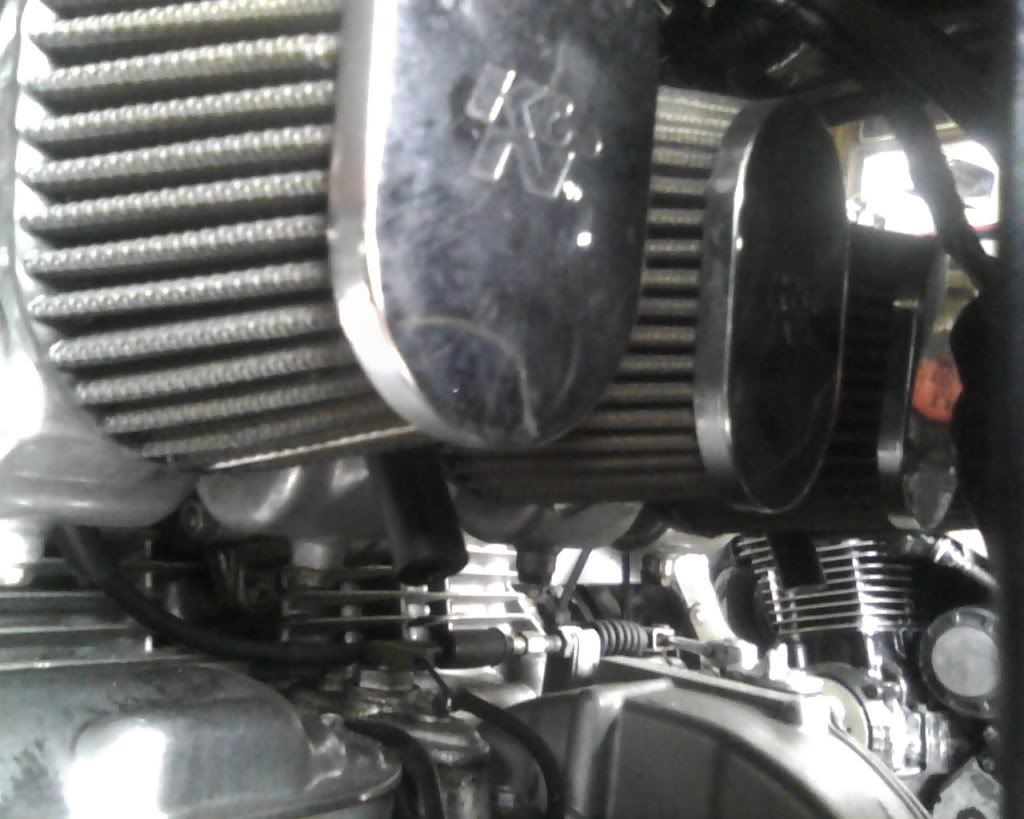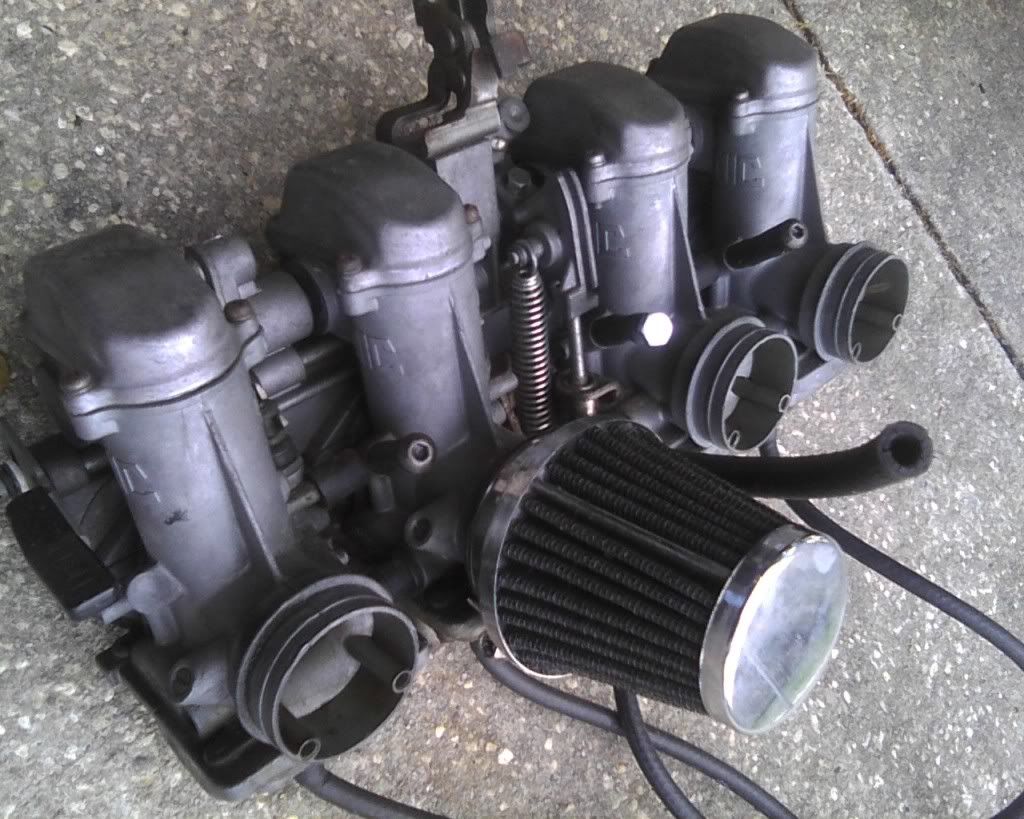I've noticed while riding both of my 1000s(Suzy '78 1000C emgo pods, SuzyII '80 1000G K&N pods), if I get hit by a cross wind there is a significant power loss. We don't get too many strong gusts in central Fl. unless a storm is coming or you're on the coast.
I really noticed it last month riding in the Tennesee hills on SuzyII. We were riding on some back roads and came out of a small cut through road(canyon) and got hit by a gust that was wraping around the hill. It immediatly acted like it was running out of gas. I was down to a 3/8 of a tank, well above reserve time. So we pulled over and investigated, just to make sure nothing was wrong. Everything seemed fine, it reved up with a twist of the throttle and there was plenty of gas in the tank after a vivual check.
Off we went with not an issue until coming around another hill and another gust struck us from the side. Same thing happened as before, so I just went along untill the wind stopped and everthing was honky dory once more.
Now back to AJs thread, here is the deal or question. I've heard of the "Vortex effect" before. About crosswind reaking havoc on the pressure around the pods. Some say it's true and some say it's BS. Now if these tubes or hoses, which I believe are commonly called vent tubes are the culprit, then putting them in a place that can't recieve a change should be the best place.
The experts at K&N call to remove the hoses completely, but to leave them unblocked. Now what exactlly do these tubes do, because there is an anomally occuring here. Here is some visuals.
First photo(SuzyII) is the vent tubes sticking down just below the filters and this is the set up I was running in Tennesee.

Next visual is the carbs off of Suzy and type of pods that I run. As you can see the tubes are completely blocked off. This is the way I got it and have been riding that way for three years now.

My old exmechanic said these tubes should not be blocked off and shouldn't run like that and asked why I blocked them. I told him thats the way it's been since I got it and when he cleaned the carbs a year earlier. If I open them up it runs like crap.
Please some or anyone explain whats up. I'm getting ready to reclean them and put in new orings and intake orings, so I'm going to have to rethink what I should do with these tubes and the tubes on SuzyII.
Just for info, I'm at near zero feet above sealevel.

.png)
.png)

 Whenever possible, performance enthusiasts should install a K&N 360 degree open-element filter. A correctly sized conical or round filter will deliver virtually unrestricted air flow. And, as we have learned, providing the engine with all of the air it needs promotes optimum performance. In a high speed application, a K&N filter will straighten the air which counteracts turbulence.
Whenever possible, performance enthusiasts should install a K&N 360 degree open-element filter. A correctly sized conical or round filter will deliver virtually unrestricted air flow. And, as we have learned, providing the engine with all of the air it needs promotes optimum performance. In a high speed application, a K&N filter will straighten the air which counteracts turbulence.
Comment